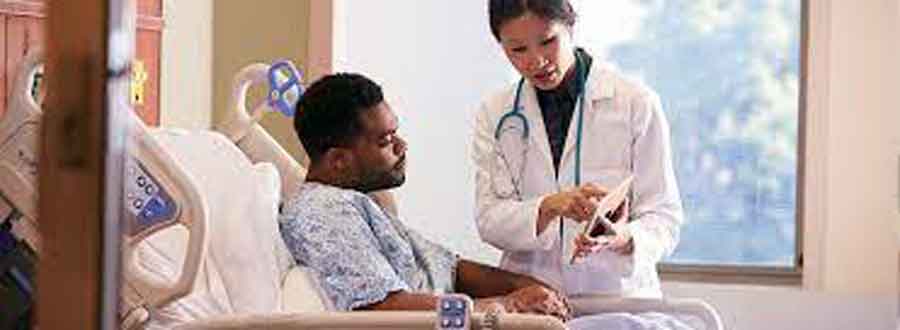Innovative Healthcare Solutions for Rural India: Bridging Gaps and Transforming Lives
Introduction: Healthcare in rural India has long been a significant challenge, marked by limited access to medical facilities, a shortage of skilled healthcare professionals, and a need for more awareness about preventive healthcare measures. The vast majority of India’s population resides in rural areas, where healthcare disparities are most pronounced. However, in recent years, there has been a surge in innovative healthcare solutions aimed at addressing these challenges and improving the overall health and well-being of rural communities.
Table of Contents
Challenges in Rural Healthcare:
Before delving into innovative solutions, it’s crucial to understand the specific challenges faced by rural India in the healthcare sector. Distance, inadequate infrastructure, and a scarcity of healthcare professionals create barriers to accessing medical facilities. Additionally, there is often a lack of awareness about basic healthcare practices.
Telemedicine:

Organizations like Sevamob and iKure are pioneering telemedicine initiatives in rural India. These platforms leverage technology to connect patients with doctors, enabling remote diagnosis and prescription services. Mobile applications and toll-free helplines further facilitate communication between patients and healthcare providers, ensuring that medical assistance is accessible even in the most remote villages.
Mobile Health (mHealth) Initiatives:
Mobile technology has become a prominent tool for disseminating healthcare information and services in rural areas. Numerous mHealth initiatives are designed to address health education, disease prevention, and early detection. For instance, organizations like mDhil and mWellcare use mobile platforms to deliver health-related content, tips, and reminders to users in rural areas.
Moreover, mobile apps are increasingly being utilized for data collection and monitoring health indicators. By gathering information on prevalent diseases, vaccination status, and maternal health, these apps enable healthcare professionals to properly allocate resources and make well-informed judgments. Such data-driven approaches are essential for developing targeted interventions and improving overall healthcare outcomes.
Community Health Workers (CHWs) and Training Programs:
Empowering local communities through the training of Community Health Workers (CHWs) is another innovative approach. These individuals, often from within the community, receive training in basic healthcare services, including first aid, maternal and child health, and disease prevention. By leveraging the existing social structures, CHWs act as a bridge between rural populations and formal healthcare systems.
Organizations like ACCESS Health International and the National Health Mission have implemented successful CHW programs. These initiatives not only enhance the delivery of healthcare services but also contribute to community engagement and health literacy. The presence of trained individuals within the community fosters trust and encourages proactive health-seeking behavior.
Healthcare Infrastructure and Mobile Clinics:
Improving physical healthcare infrastructure remains a critical aspect of addressing rural health challenges. Innovative solutions include the deployment of mobile clinics equipped with basic diagnostic tools and essential medications. These mobile units can travel to remote villages, providing on-the-spot medical consultations and treatment.
Additionally, there are initiatives focused on enhancing existing healthcare facilities in rural areas. The use of solar-powered medical equipment, for instance, ensures that essential services are not disrupted due to unreliable power sources. By investing in sustainable and technologically advanced infrastructure, healthcare providers can deliver more efficient and reliable services to underserved communities.
Public-Private Partnerships (PPPs):
The collaboration between public and private entities has become increasingly important in developing and sustaining innovative healthcare solutions for rural India. Public-Private Partnerships (PPPs) can leverage the strengths of both sectors, combining the reach and resources of the government with the efficiency and innovation of private enterprises.
Several successful PPPs have emerged in the healthcare sector, focusing on areas such as infrastructure development, skill enhancement, and service delivery. By harnessing the expertise of private organizations, these partnerships contribute to the scalability and sustainability of healthcare initiatives in rural regions.
Conclusion:
Innovative healthcare solutions are reshaping the landscape of rural health in India. From telemedicine and mobile health initiatives to community health worker programs and enhanced infrastructure, these interventions discuss the particular difficulties that rural communities face. As technology continues to advance and new partnerships form, the potential for further transformation in rural healthcare is immense.
However, challenges persist, and a holistic approach that combines technology, community engagement, and policy support is essential for sustained progress. By prioritizing the health of rural communities, India can build a stronger, more resilient healthcare system that leaves no one behind, ensuring that the benefits of innovation reach even the remotest corners of the country. As we move forward, it is crucial to learn from successful initiatives, adapt strategies to local contexts, and continue the collaborative effort to create a healthier and more equitable future for all of India’s citizens.












































